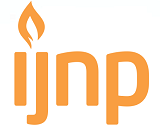Efektifitas Slow Deep Breathing Dengan Zikir Terhadap Penurunan Tekanan Darah Pada Penderita Hipertensi
DOI:
https://doi.org/10.18196/ijnp.3191Keywords:
Slow Deep Breathing, Zikir, Tekanan DarahAbstract
Abstrak
Latar Belakang: Hipertensi adalah salah satu penyakit paling mematikan di dunia dan saat ini terdaftar sebagai penyakit pembunuh ketiga setelah penyakit jantung dan kanker. Perawatan hipertensi membutuhkan waktu lama dan menimbulkan banyak komplikasi. Oleh karena itu perlu intervensi non-farmakologis yang alami untuk mengendalikan tekanan darah tinggi. Hipertensi dapat dikontrol dengan terapi non-farmakologis menggunakan teknik relaksasi pernapasan dalam yang dikombinasikan dengan zikir.
Tujuan: Tujuan dari penelitian ini adalah untuk mengetahui efektivitas pernapasan dalam lambat dengan zikir penurunan tekanan darah.
Metode: Metode penelitian ini menggunakan Quasi eksperimental dengan kelompok kontrol. Teknik pengambilan sampel menggunakan purposive sampling. Ukuran sampel terdiri dari 30 peserta yang dibagi menjadi 2 kelompok dengan masing-masing 15 peserta. Kelompok intervensi mendapat pengobatan pernapasan dalam lambat dengan zikir sedangkan kelompok kontrol hanya mendapat pengobatan pernapasan dalam lambat. Intervensi selama 14 hari. Pengukuran yang dilakukan adalah pengukuran tekanan darah menggunakan sphygmomanometer dan stetoskop. Analisis yang digunakan adalah Mann Whitney untuk tekanan darah.
Hasil: Hasil penelitian Setelah intervensi diberikan ada penurunan tekanan darah dengan nilai p 0,000 (systole) dan 0,045 (diastole).
Kesimpulan: Intervensi non-farmakologis pada pernapasan dalam yang lambat dengan zikir lebih efektif untuk menurunkan tekanan darah pada pasien dengan hipertensi. Hasil penelitian ini dapat diterapkan sebagai terapi non-farmakologis pada pasien dengan hipertensi dan bahan ajar perawatan tambahan untuk hipertensi
Abstract
Background: Hypertension is one of the most deadly diseases in the world and is currently listed as the third killer disease after heart disease and cancer. Treatment of hypertension takes a long time and causes many complications. Therefore natural non-pharmacological interventions are needed to control high blood pressure. Hypertension can be controlled by non-pharmacological therapy using deep breathing relaxation techniques combined with zikir.
Objective: The purpose of this study was to determine the effectiveness of slow breathing with a decrease in blood pressure zikir. This research method use Quasi experimental with a control group. The sampling technique use purposive sampling. The sample size consisted of 30 participants divided into 2 groups with 15 participants each. The intervention group received treatment for slow breathing with remembrance while the control group only received slow breathing treatment. Intervention for 14 days. Measurements taken are blood pressure measurements using a sphygmomanometer and stethoscope. The analysis used was Mann Whitney for blood pressure.
Results: After the intervention were given there was a decrease in blood pressure with a value of p 0.000 (systole) and 0.045 (diastole).
Conclusion: Non-pharmacological interventions in slow deep breathing with remembrance are more effective for reducing blood pressure in patients with hypertension. The results of this study can be applied as non-pharmacological therapy in patients with hypertension and additional treatment teaching materials for hypertension
References
Adib, M. (2009). Cara mudah memahami dan menghindari hipertensi, jantung dan stroke. Yogyakarta: Dianloka.
Al-Halaj, Q. M. (2014). Pengaruh zikir menjelang tidur terhadap kualitas tidur lanjut usia di panti sosial tresna wredha budi mulia 01 Jakarta Timur. Diambil kembali dari Naskah publikasi: http://repository.uinjkt.ac.id/dspace/bitstream/123456789/25630/1/Qoys%20Muhammad%20Iqbal%20Al-Halaj%20-%20fkik.pdf Diakses 24 Agustus 2018
Anggraieni, W. N. (2014). Pengaruh terapi relaksasi zikir untuk menurunkan stres pada penderita hipertensi esensial. Jurnal Intervensi Psikologi, https://www.researchgate.net/publication/319936013_PENGARUH_TERAPI_RELAKSASI_ZIKIR_UNTUK_MENURUNKAN_STRES_PADA_PENDERITA_HIPERTENSI_ESENSIAL Diakses 1 September 2018.
Depkes. (2018). Hipertensi pembunuh dian-diam, ketahui tekanan darah anda. Diambil kembali dari http://www.depkes.go.id/article/view/18051600004/hipertensi-membunuh-diam-diam-ketahui-tekanan-darah-anda.html Diakses 24 Agustus 2018
Chacko N, J., Cesare, P., Gaia, G., Nadia, C., Mara, M., Marco, R., & Luciano, B. (2005). Slow Breathing Improves Arterial Baroreflex Sensitivity and Decrease Blood Pressure In Essential Hypertension. AHA Journals, https://www.ahajournals.org/doi/full/10.1161/01.HYP.0000179581.68566.7d Diakses 24 Agustus 2018.
Hanlon, J., Blackman, M., & Glick, R. (2009). Complementary and alternative medicine. USA: Hill Companies.
Hartanti, R. D., Wardana, D. P., & Fajar, R. A. (2016). Terapi Relaksasi Nafas Dalam Menurunkan Tekanan Darah Pasien Hipertensi. Jurnal Ilmiah Kesehatan, https://media.neliti.com/media/publications/97268-ID-terapi-relaksasi-napas-dalam-menurunkan.pdf Diakses 1 September 2018.
Havisa, R. (2014). Naskah Publikasi. Diambil kembali dari Hubungan kualitas tidur dengan tekanan darah pada usia lanjut di posyandu lansia dusun jelapan sindumartani ngemplak sleman yogyakarta: http://digilib.unisayogya.ac.id/443/1/NASKAH%20PUBLIKASI.pdf Diakses 24 Agustus 2018
Lorentz, M. (2006). Stress and psychoneuroimmunology revisited : Using Mind Body Interventions to Reduce Stress. Alternative Journal of nursing.
Ng M, Freeman MK, Fleeming, T., Robinson , M., Dwyer-Lindgren, L., Thomson, B., . . . Gakidou, E. (2014). Smoking prevalence and cigarette consumption in 187 countries, 1980-2012. NCBI, https://www.ncbi.nlm.nih.gov/pubmed/24399557 Diakses 24 Agustus 2018.
Potter, P. A., & Perry, A. G. (2006). Fundamental of nursing 6th Edition. Mosby: Louis Missouri.
Saleh, A. Y. (2010). Berzikir Untuk Kesehatan saraf. Jakarta: Zaman.
Siburian, I. (2001). Gambaran kejadian hipertensi dan faktor-faktor yang berhubungan tahun 2001 (Analisis data sekunder SKRT 2001). Depok: Skripsi. Fakultas Kesehatan Masyarakat. Universitas Indonesia.
Susilo, Y., & Wulandari, A. (2011). Cara Jitu Mengatasi Hipertensi. Yogyakarta: Andi Offset.
Tortora, G., & Derrickson, B. (2009). Principles of anatomy and physiology. USA: Jhon Wiley
Downloads
Additional Files
Published
Issue
Section
License
License
Articles published in the IJNP (Indonesian Journal of Nursing Practices) are licensed under a Attribution 4.0 International (CC BY 4.0) license. You are free to:
- Share — copy and redistribute the material in any medium or format.
- Adapt — remix, transform, and build upon the material for any purpose, even commercially.
This license is acceptable for Free Cultural Works. The licensor cannot revoke these freedoms as long as you follow the license terms. Under the following terms:
Attribution — You must give appropriate credit, provide a link to the license, and indicate if changes were made. You may do so in any reasonable manner, but not in any way that suggests the licensor endorses you or your use.
- No additional restrictions — You may not apply legal terms or technological measures that legally restrict others from doing anything the license permits.
Copyright
Authors who publish with IJNP (Indonesian Journal of Nursing Practices) agree to the following terms:
- Authors retain copyright and grant IJNP (Indonesian Journal of Nursing Practices) the right of first publication with the work simultaneously licensed under an Attribution 4.0 International (CC BY 4.0) that allows others to remix, adapt and build upon the work with an acknowledgment of the work's authorship and of the initial publication in IJNP (Indonesian Journal of Nursing Practices).
- Authors are permitted to copy and redistribute the journal's published version of the work (e.g., post it to an institutional repository or publish it in a book), with an acknowledgment of its initial publication in IJNP (Indonesian Journal of Nursing Practices).














